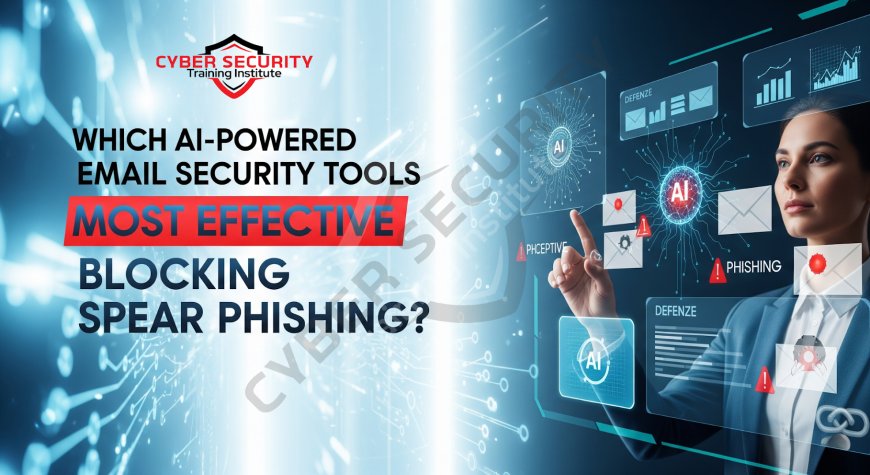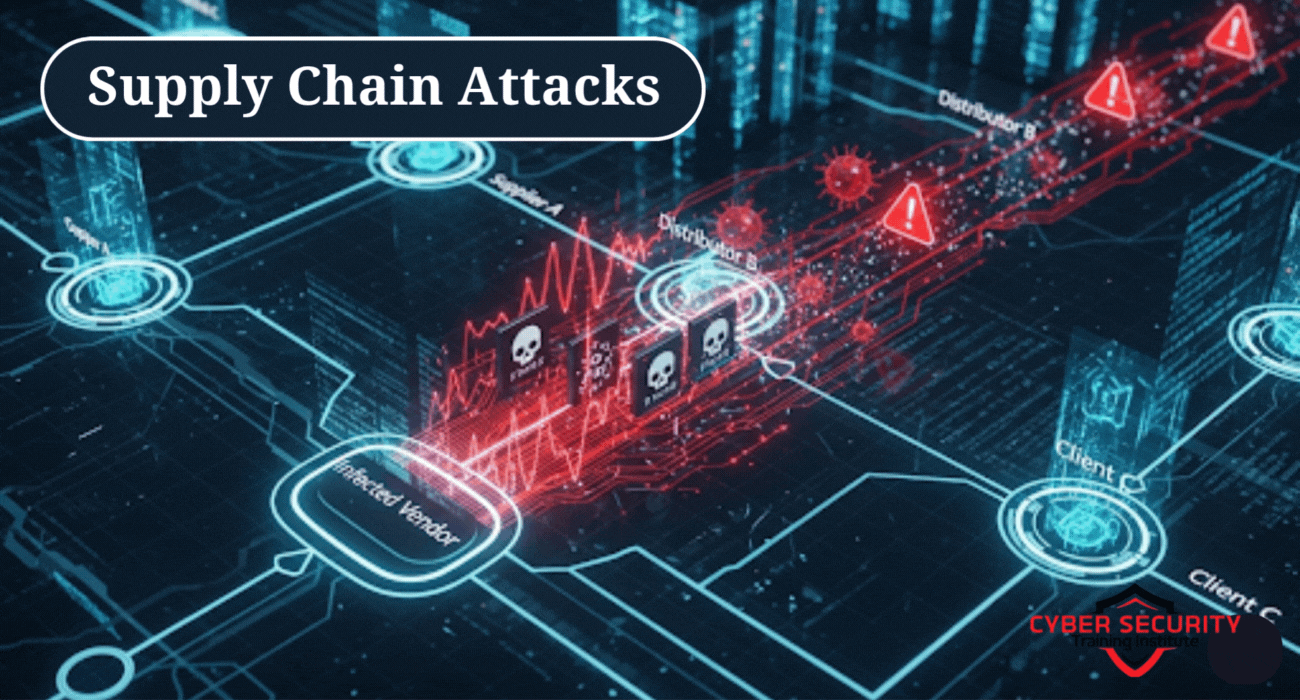Which AI-Powered Email Security Tools Are Most Effective in Blocking Spear Phishing?
The most effective AI-powered tools for blocking spear phishing are Integrated Cloud Email Security (ICES) platforms and Browser Isolation tools. These solutions work by using AI to analyze the context, intent, and relationships within an email, moving beyond simple malware scanning to detect sophisticated social engineering. This detailed analysis for 2025 explains why traditional Secure Email Gateways (SEGs) are failing against modern, AI-generated spear-phishing and Business Email Compromise (BEC) attacks. It breaks down how modern ICES platforms use AI-driven social graph and intent analysis to detect these threats. The article outlines a multi-layered defensive strategy that combines the advanced detection of ICES, the proactive prevention of browser isolation, and a continuously tested "human firewall," providing a CISO's guide to building a resilient email security posture.

Table of Contents
- Introduction
- The Secure Email Gateway (SEG) vs. The AI Co-Pilot
- The Human Target: Why Spear Phishing Remains Unbeaten by Traditional Tools
- How Modern AI Email Security Thinks
- Most Effective AI-Powered Email Security Layers for Spear Phishing
- Beyond the Inbox: The Rise of Multi-Channel Phishing
- The AI Arms Race in the Inbox
- A CISO's Strategy for Resilient Email Security
- Conclusion
- FAQ
Introduction
The most effective AI-powered email security tools for blocking spear phishing are not a single product, but an integrated defense stack. This includes Integrated Cloud Email Security (ICES) platforms that analyze social graphs and communication patterns, and Browser Isolation tools that neutralize malicious links before they can do harm. These solutions are effective because they move beyond simply looking for malware attachments and instead use AI to analyze the context, intent, and relationships within an email to spot the subtle clues of a socially engineered attack. In 2025, spear phishing and its costly cousin, Business Email Compromise (BEC), remain the number one initial access vector for major security breaches. These attacks succeed because they target the most vulnerable part of any organization: its people. As attackers use AI to craft perfect, personalized lures, it has become essential for defenders to fight back with an even smarter AI.
The Secure Email Gateway (SEG) vs. The AI Co-Pilot
For decades, the standard for email security was the Secure Email Gateway (SEG). Typically a physical or virtual appliance, the SEG sat at the network perimeter, scanning all incoming and outgoing emails for spam and known malware signatures. While effective against mass-market threats, the SEG model has several critical blind spots in the modern era. It struggles with socially engineered attacks that contain no malware, and it has no visibility into internal "east-west" traffic, meaning it is blind to an attacker who uses one compromised account to phish other employees.
The new model is Integrated Cloud Email Security (ICES). Instead of sitting at the perimeter, an ICES platform connects directly to your cloud email environment (like Microsoft 365 or Google Workspace) via APIs. This gives it a much richer view. It acts like an AI co-pilot for your inbox, analyzing not just the content of a single email, but also the historical communication patterns, social relationships, and internal email flow to spot anomalies that a gateway could never see.
The Human Target: Why Spear Phishing Remains Unbeaten by Traditional Tools
Spear phishing continues to be the most effective attack vector because it has evolved to bypass traditional technological defenses:
The Rise of Generative AI Lures: As we've discussed, attackers are now using Large Language Models (LLMs) to generate flawless, personalized, and highly convincing email content at scale, eliminating the classic red flags of typos and bad grammar.
The Threat of Payload-less BEC Attacks: The most damaging attacks often contain no malicious link or attachment. A Business Email Compromise (BEC) attack is a simple, plain-text email that impersonates a CEO or a vendor, instructing an employee to make a fraudulent wire transfer. A traditional SEG has nothing to block.
The Internal Threat Vector: Once an attacker compromises a single account, they can use it to send highly believable phishing emails to other employees. Because these emails originate from a trusted internal source, they bypass gateway defenses and are far more likely to succeed.
The High Financial Payoff: A single successful BEC attack can result in millions of dollars in losses, making it a highly lucrative and persistent threat that criminals are heavily invested in.
How Modern AI Email Security Thinks
An AI-powered ICES platform analyzes an email across multiple layers to build a comprehensive risk score, thinking much like a seasoned security analyst:
1. Social Graph Analysis: The AI first builds a "social graph" of the organization, learning who normally emails whom, how often, at what times, and on what topics. It can instantly detect that an email from your "CEO" is suspicious because it's coming from a new Gmail address and the real CEO has never emailed this particular employee in the finance department before.
2. Content and Intent Analysis: The platform's integrated LLM analyzes the language of the email. It is trained to recognize the linguistic patterns of a BEC attack, such as an unusual sense of urgency, the mention of wire transfers or gift cards, and a tone or writing style that is inconsistent with the purported sender's historical emails.
3. Link and Payload Analysis: If the email contains a link, the AI doesn't just check it against a reputation list. It follows the link in a cloud-based sandbox and uses computer vision to analyze the rendered page. It can recognize the visual layout of a Microsoft 365 or bank login page and identify it as a credential harvesting attempt, even if the URL has never been seen before.
4. Advanced Authentication Checks: Beyond standard DMARC, DKIM, and SPF checks, the AI analyzes email headers for subtle anomalies that can indicate a sophisticated spoofing attempt, and it can flag unusual mail routing or client information.
Most Effective AI-Powered Email Security Layers for Spear Phishing
A truly resilient defense against spear phishing requires a multi-layered approach, not a single tool:
| Security Layer | Core Function | Key AI-Powered Capability | Key Innovators / Players |
|---|---|---|---|
| Integrated Cloud Email Security (ICES) | API-based analysis of internal and external email traffic directly within the cloud email platform. | Social Graph and Intent Analysis. Uses AI to understand communication patterns and the language of BEC to detect malware-less attacks. | Abnormal Security, Avanan (a Check Point company), Proofpoint |
| Browser Isolation | Opens all links from untrusted emails in a remote, disposable cloud-based browser, streaming a safe visual feed to the user. | Rendering and Computer Vision. Some platforms use AI to analyze the visual structure of the rendered page to identify it as a phishing site. | Cloudflare, Menlo Security, Zscaler |
| Security Awareness Training (with AI Simulation) | Educating the "human firewall" to recognize and report sophisticated phishing attempts. | AI-Generated Phishing Simulations. Modern training platforms use Generative AI to create realistic, personalized phishing tests for employees. | KnowBe4, Proofpoint (formerly Wombat Security), Cofense |
Beyond the Inbox: The Rise of Multi-Channel Phishing
While email remains the number one vector, CISOs must recognize that spear phishing is a multi-channel problem. Even the world's best email security platform cannot stop an attack that originates from a different vector. Advanced threat actors are now launching coordinated campaigns that might start with a spear-phishing email but then pivot to a LinkedIn message, a Slack DM, a WhatsApp message, or an SMS (smishing). This highlights the critical need for a holistic Zero Trust architecture that verifies identity and context at every access request, not just at the email gateway. It also underscores the importance of a well-trained user base that is skeptical of any unusual request, regardless of the platform it comes from.
The AI Arms Race in the Inbox
The need for defensive AI in email security is a direct response to the weaponization of AI by attackers. As we've detailed in previous posts, threat actors are leveraging Generative AI to an unprecedented degree. They use LLMs to write flawless, personalized email lures that are free of the red flags we used to rely on. They use AI to generate realistic fake invoices and other weaponized documents. They use AI to create pixel-perfect fake websites for credential harvesting. Because the attack itself is now AI-generated, a defense that does not have its own, more sophisticated AI to analyze the content, context, and intent of a message is destined to fail.
A CISO's Strategy for Resilient Email Security
For CISOs looking to build a defense that is effective against the threats of 2025, a four-pronged strategy is essential:
1. Augment Your Cloud Provider's Native Security: While the built-in security of Microsoft 365 and Google Workspace is good, it is not enough. You must layer a specialized ICES solution on top of it to get the advanced AI-powered detection needed to stop BEC and other sophisticated attacks.
2. Combine Detection with Proactive Prevention: Don't rely on detection alone. Proactively neutralize the threat of malicious links by implementing a browser isolation solution. This ensures that even if a clever phish gets through, the user can't be harmed by the malicious site.
3. Invest in Your "Human Firewall": Continuously train and test your employees. Use a modern security awareness platform that leverages AI to send realistic, personalized phishing simulations to keep users on high alert.
4. Integrate Email Security into a Broader XDR Strategy: Your email security platform is a rich source of threat intelligence. Ensure its signals are fed into a central XDR or SIEM platform to be correlated with alerts from your endpoint, network, and cloud defenses for a unified view of a potential attack.
Conclusion
Spear phishing in 2025 is a sophisticated, AI-driven attack that targets human psychology and trust. Defeating it requires an equally sophisticated, AI-powered defense that can look beyond simple malware signatures to understand context, relationships, and linguistic intent. The era of the simple gateway filter is over. By layering a modern, API-driven Integrated Cloud Email Security (ICES) platform with proactive controls like browser isolation and a continuously tested human firewall, organizations can build a resilient, defense-in-depth architecture that effectively protects them against their most persistent and dangerous threat vector.
FAQ
What is spear phishing?
Spear phishing is a highly targeted phishing attack that is personalized to a specific individual or organization. Unlike bulk phishing that uses generic lures, a spear-phishing email will often use the target's name, job title, and other personal information to appear more legitimate.
What is Business Email Compromise (BEC)?
BEC is a type of spear-phishing attack where the criminal impersonates a high-level executive (like the CEO) or a trusted vendor and tricks an employee into making a fraudulent wire transfer or divulging sensitive information. These attacks often contain no links or malware.
What is a Secure Email Gateway (SEG)?
A SEG is a traditional email security solution that sits at the network perimeter and scans all incoming and outgoing emails for spam, viruses, and other known threats. Its visibility is limited to the network edge.
What is Integrated Cloud Email Security (ICES)?
ICES is a modern, API-based approach to email security. Instead of sitting at the perimeter, it integrates directly with cloud email platforms like Microsoft 365 and Google Workspace, giving it much deeper visibility into communication patterns and internal email traffic.
How does AI's "social graph analysis" work?
The AI analyzes metadata from an organization's email traffic to build a map of who normally communicates with whom. It can then spot anomalies, such as a sudden email from the "CEO" to a junior finance clerk, which deviates from the established communication patterns.
How does AI analyze the "intent" of an email?
It uses Natural Language Processing (NLP), a type of AI, to analyze the text. It's trained on millions of real BEC emails to recognize the linguistic hallmarks of a fraudulent request, such as a sense of urgency, an appeal to authority, and unusual language around financial transactions.
What is browser isolation?
Browser isolation is a security technology that executes all web Browse activity in a secure, disposable container in the cloud. It streams a safe, interactive visual feed to the user's browser, ensuring that no malicious code from a website can ever reach the user's endpoint device.
What is the "human firewall"?
This is a term used to describe the collective security awareness and vigilance of an organization's employees. A well-trained workforce can act as a powerful defensive layer by recognizing and reporting phishing attempts.
What are DMARC, DKIM, and SPF?
These are email authentication standards that are used to prevent basic email spoofing by verifying that an email is coming from the domain it claims to be from. They are an essential foundational control but can be bypassed by more sophisticated attacks.
Why is internal "east-west" traffic a blind spot?
"East-west" traffic refers to communications that happen inside a network. A traditional SEG only inspects "north-south" traffic (coming in and out of the network). If an attacker compromises one account, they can send internal phishing emails that the SEG will never see.
Are my cloud provider's built-in security tools enough?
While platforms like Microsoft 365 Defender and Google Workspace have good built-in security, specialized ICES vendors often provide more advanced, focused AI models specifically for detecting BEC and other advanced threats. Most experts recommend layering a third-party solution.
What is computer vision used for in email security?
It's used in the sandboxing of links. When the platform visits a suspicious URL, it uses computer vision to visually analyze the page. It can recognize the logos, form fields, and layout of a Microsoft login page, identifying it as a credential harvesting site even if the URL is brand new.
What is a "payload-less" attack?
This refers to an attack, like a classic BEC request for a wire transfer, that contains no malicious files or links. It is just plain text. These attacks are designed to bypass security tools that only look for malicious payloads.
How do AI-powered phishing simulations work?
Modern security awareness training platforms use Generative AI to create highly realistic and personalized phishing emails to test employees. The AI can use an employee's job title and department to craft a lure that is highly relevant to their role.
What is a social engineering attack?
It is a type of attack that relies on psychological manipulation to trick people into divulging sensitive information or performing a malicious action. Spear phishing is a form of social engineering.
What is "smishing"?
Smishing is a phishing attack that is carried out via SMS text messages.
What is XDR?
XDR stands for Extended Detection and Response. It's a security platform that correlates threat signals from multiple sources—including email, endpoints, networks, and the cloud—to provide a unified view of an attack.
What is a "CEO fraud" attack?
This is another name for a Business Email Compromise (BEC) attack, specifically one where the attacker impersonates the organization's CEO to add a sense of authority and urgency to their fraudulent request.
Can these tools block attacks from a compromised partner's account?
Yes, this is a key strength of ICES. Even if an email is coming from a legitimate, trusted partner's email account (which has been compromised), the AI can still flag it as suspicious if the content of the email (e.g., a sudden, urgent request for an invoice payment to a new bank account) is anomalous.
What's the most important first step to improve our email security?
The most important first step is to recognize the limitations of your current gateway or your cloud provider's default security, and to evaluate a modern, API-driven ICES solution that can provide the AI-powered contextual analysis needed to stop today's threats.
What's Your Reaction?
 Like
0
Like
0
 Dislike
0
Dislike
0
 Love
0
Love
0
 Funny
0
Funny
0
 Angry
0
Angry
0
 Sad
0
Sad
0
 Wow
0
Wow
0
















